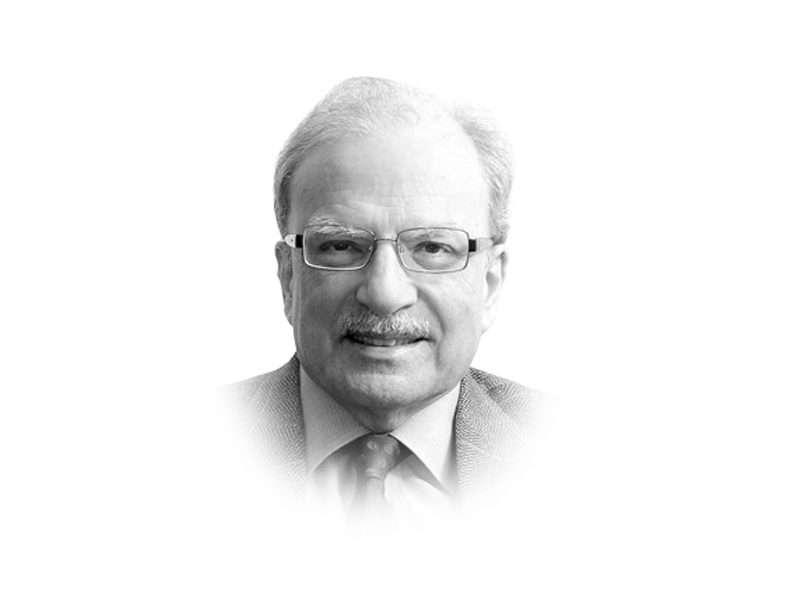
Pakistan is now firmly placed in China’s orbit and is likely to stay there for decades to come. Covid-19 that originated in China took a heavier economic and human toll in the United States and parts of Europe than it did in China. That notwithstanding, the pandemic is likely to change the structure of the global economy and how China fits into it. How would these changes affect Pakistan and its relations with China? I will attempt an answer to this question before I conclude this article.
Looking back at Pakistan’s 73-year history we see that the three periods of high rates of economic growth coincided with those during which there were good relations with the US. Washington came to Pakistan for its own reasons. This was during most of the period when Field Marshal Ayub Khan governed the country. In the seven-year period between October 1958 when the military took charge and September 1965 when India and Pakistan went to war, large amounts of American military and economic assistance flowed into the country. In return Pakistan became an active participant in the Washington-led defence pacts aimed at preventing the Soviet and Chinese Communism from encroaching upon Asia. The war with India resulted in the American pull out from Pakistan.
The Americans came back in the 1980s when General Ziaul Haq’s government agreed to partner with Washington to push out the Soviet Union from Afghanistan. The Soviets pulled out in 1989 and the Americans withdrew from Pakistan soon after. The third period of close Islamabad-Washington partnership was during the presidency of George W Bush’s “War on Terror”. This lasted from 2001 to 2009. This off-and-on relationship is now over with China now becoming Pakistan’s strong and steady partner. It appears that this relationship is not likely to be disturbed even during periods of turbulence.
Much of the current global turbulence was caused by Donald J Trump, the 45th US president. In his inaugural address delivered on January 20, 2017, he promised to “make America great again”. MAGA became the slogan his followers that came to be called the “Trump base” put on their red hats. MAGA was a vague promise; much of it was directed at China — to keep in place the rising Asian power. But China continued to move forward even though its rise was interrupted by the arrival of the novel coronavirus — it was called novel since it had never been seen and experienced before. The virus was much more lethal when it attacked the human body. It caused respiratory ailments that were given the name of Covid-19. It was highly contagious, carried in the droplets that come in human breath. The virus was first detected in the Central China city of Wuhan on the Yangtze River and from there it was transported by travellers who went from China to the Middle East and Europe. It mutated in Europe and went with those who traveled to the US.
By January 2020, the World Health Organization announced that mankind faced a pandemic which took a heavy toll in terms of the number of people who picked up the disease. Since there was no vaccine as yet available there was consensus among disease experts that the only way to contain the spread of the disease was to reduce human contact. People were advised to wear face masks, keep distance of at least six feet from other people, and not participate in activities that brought them into contact with a lot of other people. Some of these practices were enforced by governments; some others were left to be followed voluntarily. China followed the first course; the US went on the second road. Initially both paid a heavy economic price. But China was successful not only in containing the spread of Covid-19 but also in reviving its economy.
On Monday, October 19, 2020, China Bureau of Statistics reported that the country’s GDP increased at the rate of 4.9% in the July-September quarter when compared to the same period in 2019. This was impressive performance since it brought back China to the roughly 6% rate of increase before it was hit by Covid-19. The economy had contracted by 6.8% during the first quarter of 2020. The country’s cumulative growth for 2020 is now back in the black while most other large economies such as Britain, Germany and the US have shrunk in absolute terms. The International Monetary Fund forecast Chinese growth for 2020 at 1.8%, while the US is expected to shrink by 4.3% and Germany by 6%.
The Chinese recovery was the result of the return of consumer confidence in the country’s economy. For instance, car sales increased by 11% from a month ago. In October more than 630 million Chinese took trips during the National Day holiday on the first day of the month to celebrate the founding of the Communist state. Eswar Prasad, an economist of Indian origin who has worked at the IMF’s China division and now teaches at Cornell University, said that China would probably be the “key driver of global growth in 2020 and 2021. The country is in the remarkable position of being the only major economy that will register positive growth in 2020.”
In the report released on October 19, the China Bureau of Statistics said that the biggest threat to the country’s continued recovery was that “the international environment is still complicated and severe with considerable instabilities and uncertainties”. No doubt the report’s authors had in mind the US elections of November 3. If there is a change of guard in Washington and Joe Biden replaces the mercurial Trump as the country’s president, there is likely to be greater stability in world affairs. In May, China’s top leadership unveiled what they called a “dual circulation strategy” aimed at making the country more self-reliant by boosting domestic consumption as the pandemic came under control and reducing dependence on developed countries such as the US and Western Europe for technology and trade. The leadership will hold its annual meeting in late October or early November at which they will spell out the details of President Xi Jinping’s approach to “take the path of indigenous innovation through self-reliance”.
The new Chinese economic strategy that is likely to be adopted and articulated after the country’s senior leadership has met later this year, is likely to shift the focus of development from export-led growth to producing more growth from domestic consumption. The country is now much richer with considerably higher worker-wages compared to the time decades ago when it joined other East Asian miracle economies in generating growth by exporting cheap merchandise to the West. The move to domestic consumption as the driver of growth would mean more imports of products produced by low-priced labour. This is where Pakistan enters the picture. However, Islamabad will need to come up with a strategy that dovetails with the change in China’s economic approach.
Published in The Express Tribune, October 26th, 2020.
Like Opinion & Editorial on Facebook, follow @ETOpEd on Twitter to receive all updates on all our daily pieces.













COMMENTS
Comments are moderated and generally will be posted if they are on-topic and not abusive.
For more information, please see our Comments FAQ